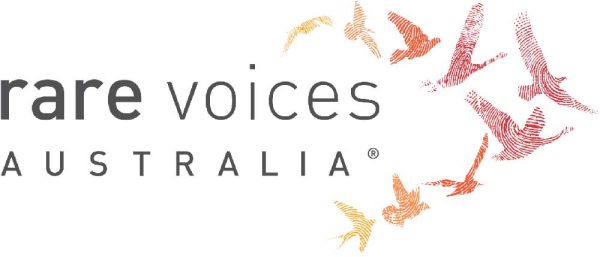Lambert-Eaton myasthenic syndrome (LEMS)
Quick Search
- Summary
- Synonyms and Classifications
- Symptoms
- Disability Impacts
- Cause and Inheritance
- Diagnosis
- Treatment
- Clinical Care Team
- Clinical Care Guidelines
- Emergency Management
- Research
- Rare Disease Organisation(s)
- Lived Experience
- Support Services and Resources
- Mental Health
- Other Information
- Useful Links for Healthcare Professionals
Summary
Lambert-Eaton myasthenic syndrome (LEMS) is an autoimmune, neuromuscular condition affecting the neuromuscular junction (NMJ).1,2 In LEMS, the voltage-gate calcium channels (VGCC) at the NMJ do not function properly and this affects the release of signals (neurotransmitters) that allow the nerve and muscle cells to communicate with each other. LEMS affects voluntary muscles (muscles that can be controlled) as well as the autonomic nervous system (organs that control automatic body functions). This leads to muscle weakness, usually in the legs and arms but can also affect the facial muscles, as well as dry mouth and eyes, constipation, decreased tendon reflexes and other symptoms.1-5
LEMS is often associated with small cell lung cancer (SCLC) as well as other types of cancer, with the onset of LEMS symptoms usually observed prior to the cancer diagnosis.1,4
LEMS differ from other myasthenic (muscular weakness) disorders, such as myasthenia gravis (MG), which is also an autoimmune condition but affects only skeletal (voluntary) muscles, and congenital myasthenic syndromes (CMS) that are genetic conditions.
Synonyms and Classifications
Synonyms: Eaton Lambert syndrome; Lambert Eaton syndrome; Myasthenic syndrome of Lambert-Eaton; Myasthenic-Myopathic syndrome of Lambert-Eaton.1
Universal rare disease classifications provide a common language for recording, reporting and monitoring diseases. Please visit the Rare Disease Classifications page for more information about these internationally recognised classifications.
Symptoms
The most common symptom of LEMS is weakness in the proximal muscles (muscles closest to the core of the body), particularly of the legs and arms.3,4 Other symptoms include muscle pain and stiffness, double vision and slurred speech.2,4 The autonomic nervous system can also be affected, which may lead to dry mouth and eyes, constipation, changes in sweating, drop in blood pressure when moving from sitting or lying down to standing up (orthostatic hypotension) and erectile dysfunction in males.3-5 Decreased or absent tendon reflexes may also be observed. There may also be further complications such as gum disease (due to chronic dry mouth) and eye issues including corneal scarring (due to severe dry eyes). Respiratory failure has been reported but is rare in LEMS individuals.3,4
A proportion of individuals with LEMS have also been found to have cancer, such as small cell lung cancer (SCLC).2 Additional complications of LEMS may include cerebellar ataxia, a disorder of the nervous system that may result in impaired motor skills and coordination.
Please speak to your medical team to learn more about the symptoms and complications of LEMS.
Disability Impacts
Rare diseases are often serious and progressive, exhibiting a high degree of symptom complexity, leading to significant disability. Majority of the estimated two million Australians living with a rare disease meet the Australian Government’s definition for disability (in accordance to the Australian Public Service Commission and Australian Bureau of Statistics), and many experience severe and permanent disability impacts. If you or someone you care for is experiencing disability-related impacts from a rare condition, please speak with a health or disability professional for advice. Information about relevant disability support can be found at the RARE Portal’s Disability Support Information page.
Cause and Inheritance
LEMS is an autoimmune condition. In LEMS, there is a dysfunction in the P/Q-type (and possibly N-type) voltage-gate calcium channel (VGCC) at the neuromuscular junction, which prevents release of acetylcholine, a neurotransmitter involved in transmission of signals between two cells.2,4 In majority of cases of LEMS, this dysfunction is caused by production of auto-antibodies (anti-VGCC) by one’s own body attacking the VGCC. There are also a low number of individuals who are seronegative, in that they have a defect in their VGCC but anti-VGG auto-antibodies have not been detected.
A proportion of individuals with LEMS also have cancers such as small cell lung cancer (SCLC), which has been thought to contribute to the production of anti-VGCC autoantibodies.4
Diagnosis
LEMS may be diagnosed using a blood test to detect for the presence of anti-VGCC auto-antibodies as well as repetitive nerve stimulation (RNS) test to identify specific patterns of abnormalities in the response to motor nerve stimulation.2 Single fibre electromyography (SFEMG) has also been used to detect impaired neuromuscular transmission in LEMS.
Please speak to your medical team to learn more about the available diagnostic pathways for LEMS.
Treatment
There is currently no curative treatment for LEMS. Treatment of LEMS typically involves treatment of tumour if one is present, and management of the symptoms.4 This involves a multidisciplinary care team and may include oral medications to control the condition, including:2,6
- potassium channel blockers, such as amifampridine, which increases release of acetylcholine
- anti-acetylcholinesterase agents
- immunosuppressive medication, which may be long-term treatments
Additional treatments for LEMS include:2,6
- plasmapheresis, in which the liquid portion of blood that contains the auto-antibodies (plasma) is removed and replaced with treated or new plasma
- intravenous immunoglobulin (IVIg) – infusion of plasma solution from healthy donors
There may also be other strategies to treat specific symptoms and complications associated with LEMS.
Please speak to your medical team to learn more about the possible treatment or management options for your condition. Treatment will depend on an individual’s specific condition and symptoms. It is also important to stay connected to your medical team so that you can be made aware of any upcoming clinical trial opportunities.
Clinical Care Team
Clinical care for rare diseases often involves a multidisciplinary team of medical, care and support professionals. Please note that the information provided here is as a guide and that RVA does not necessarily monitor or endorse specific clinics or health experts.
Healthcare professionals involved in the treatment of LEMS may include general practitioners (GP), neurologists, ophthalmologists, dentists, pulmonologists, immunologists, urologists, dermatologists, cardiologists and oncologists. The need for different healthcare professionals may change over a person’s lifetime and extend beyond those listed here.
Clinical Care Guidelines
We are not aware of any current clinical care guidelines for LEMS in Australia. If you know of any relevant care guidelines, please let us know via the Contribute page.
The following guidance is available from international experts outside Australia; however, there may be information that is not relevant or applicable to the Australian context, and may not be up to date:
- Guidance for the management of myasthenia gravis (MG) and Lambert-Eaton myasthenic syndrome (LEMS) during the COVID-19 pandemic prepared by an international working group of MG experts and endorsed by American Association of Neuromuscular & Electrodiagnostic Medicine (AANEM); please note that this was prepared in 2020.
Emergency Management
Individuals living with rare diseases may have complex medical issues and disabilities, which are not always visible. It is often useful to refer to their medical history as well as personal information such as a medical card, doctor’s letter, or if available, a rare disease passport, for relevant information.
It may be important to consider the following when managing individuals living with RD at emergency departments/services:
- it has been recommended to avoid certain medications, if possible, when treating individuals with LEMS. This includes antibiotics such as aminoglycosides and other drugs that can impair neuromuscular transmission.6,7
- there are very rare cases of respiratory failure reported in LEMS individuals.3,4
Research
Information about myasthenia research in Australia can be found at:
There are specific considerations around participating in rare disease research, including clinical trials. It is important to be mindful of issues such as data privacy, research ethics, consent and differences in research regulations between Australia and other countries.
If you are interested in finding clinical trials for your condition, please visit the following websites; however, there may not be any clinical trials available:
It is best to discuss your interest in any clinical trials with your medical team to determine suitability and eligibility.
Please note that RVA does not necessarily monitor or endorse each group/organisation’s operational governance and activities.
Rare Disease Organisation(s)
Australian Organisations:
Myasthenia Alliance Australia (MAA)
Website: https://myastheniaalliance.org.au/
Myasthenia Alliance Australia (MAA) work closely with state-based Myasthenia Gravis associations to provide valuable resources, support networks, and mental health initiatives to help individuals navigate life with MG, including for LEMS.
Below are the organisations that make up MAA, both organisations provide support for all Australians living with myasthenia, including their families and carers, regardless of location:
Myasthenia Gravis Association of Queensland
Website: https://www.mgaq.org.au/
Australian Myasthenic Association in New South Wales
Website: https://www.myasthenia.au/
Please note that RVA does not monitor or endorse each group/organisation’s operational governance and activities. When engaging with a group, please consider the information on the RARE Portal’s Finding Helpful Peer and Community Supports page.
Lived Experience
LEMS varies between individuals, and each person’s experience is unique.
If you would like to share your personal story with RVA, please visit the Rare Voices Australia: Share Your Story page. RVA will consider your story for publishing on our website and inclusion on the RARE Portal.
Support Services and Resources
Myasthenia Alliance Australia and its state organisations provide support resources relevant for individuals living with LEMS:
- Myasthenia Alliance Australia: Peer Support
- Myasthenia Gravis Association of Queensland Inc.: Resources
- Australian Myasthenic Association in NSW: Patient Support
The Loop – Your Neuromuscular Resource Hub: Funding provides information on available social services that are relevant to the neuromuscular community.
For information on available government and social services that provide support for individuals with a rare disease, please visit the National and State Services pages.
Mental Health
People living with a rare disease, including families and carers, often face unique challenges such as diagnostic delays, misdiagnoses, limited treatment options, and limited access to rare disease specialists and support. These challenges may impact people’s emotional wellbeing and quality of life. Many people find it helpful to seek mental health and wellbeing support to cope with ongoing stress and uncertainty. Connecting with people who have shared experiences through a support group may also be helpful. Information about relevant mental health and wellbeing support can be found at:
- Mental Health and Wellbeing Support for Australians Living with a Rare Disease
- The National and State Services pages underneath the ‘Mental Health’ sections listed
Other Information
Further information on LEMS, or neuromuscular conditions in general, can be found at:
Useful Links for Healthcare Professionals
References
- Genetic and Rare Diseases (GARD) Information Center. Lambert Eaton myasthenic syndrome. Accessed March 23, 2023. https://rarediseases.info.nih.gov/diseases/6851/lambert-eaton-myasthenic-syndrome
- Orphanet. Lambert-Eaton myasthenic syndrome. Accessed 23 March 2023. https://www.orpha.net/en/disease/detail/43393
- Jayarangaiah A, Lui F, Kariyanna PT. Lambert-Eaton Myasthenic Syndrome. Updated 23 October 2023. In: StatsPearl [internet]. Treasure Island (FL): StatPearls Publishing. 2024-. Accessed 13 November 2024. https://www.ncbi.nlm.nih.gov/books/NBK507891/
- Kesner VG, Oh SJ, Dimachkie MM, Barohn RJ. Lambert-Eaton Myasthenic Syndrome. Neurol. Clin. 2018; 36(2): 379-394. http://doi.org/10.1016/j.ncl.2018.01.008
- National Organization for Rare Diseases (NORD). Lambert-Eaton Myasthenic Syndrome. Updated September 2023. Accessed 13 November 2024. https://rarediseases.org/rare-diseases/lambert-eaton-myasthenic-syndrome/
- Harada Y, Guprill JT. Management/Treatment of Lambert-Eaton Myasthenic Syndrome. Curr. Treat. Options Neurol. 2021; 23(34). http://doi.org/10.1007/s11940-021-00690-4
- Lipka AF, Verschuuren JJGM. Chapter 18 – Lambert-Eaton myasthenic syndrome. 2024. In: Giometto B, Pittock SJ. (eds) Handbook of Clinical Neurology, Vol. 200 (3rd series) Paraneoplastic Neurologic Disorders, p 307-325. https://doi.org/10.1016/B978-0-12-823912-4.00012-8
- Myasthenia Gravis Association of Queensland Inc. Myasthenia Gravis – a comprehensive guide to living with and understanding this manageable condition. Queensland; 2022. 36p. https://mgaq.org.au/sites/default/files/2024-09/MGAQ_Brochure_2022.pdf
Contributors
This page has been co-developed by Rare Voices Australia (RVA)’s RARE Portal team in consultation with Myasthenia Alliance Australia, which represents Myasthenia Gravis Association of Queensland Inc. and The Australian Myasthenic Association in NSW.
If you are aware of any additional information that may benefit stakeholders with an interest in this page, or if you notice any broken links or inaccurate information, please let us know via the Contribute page.

